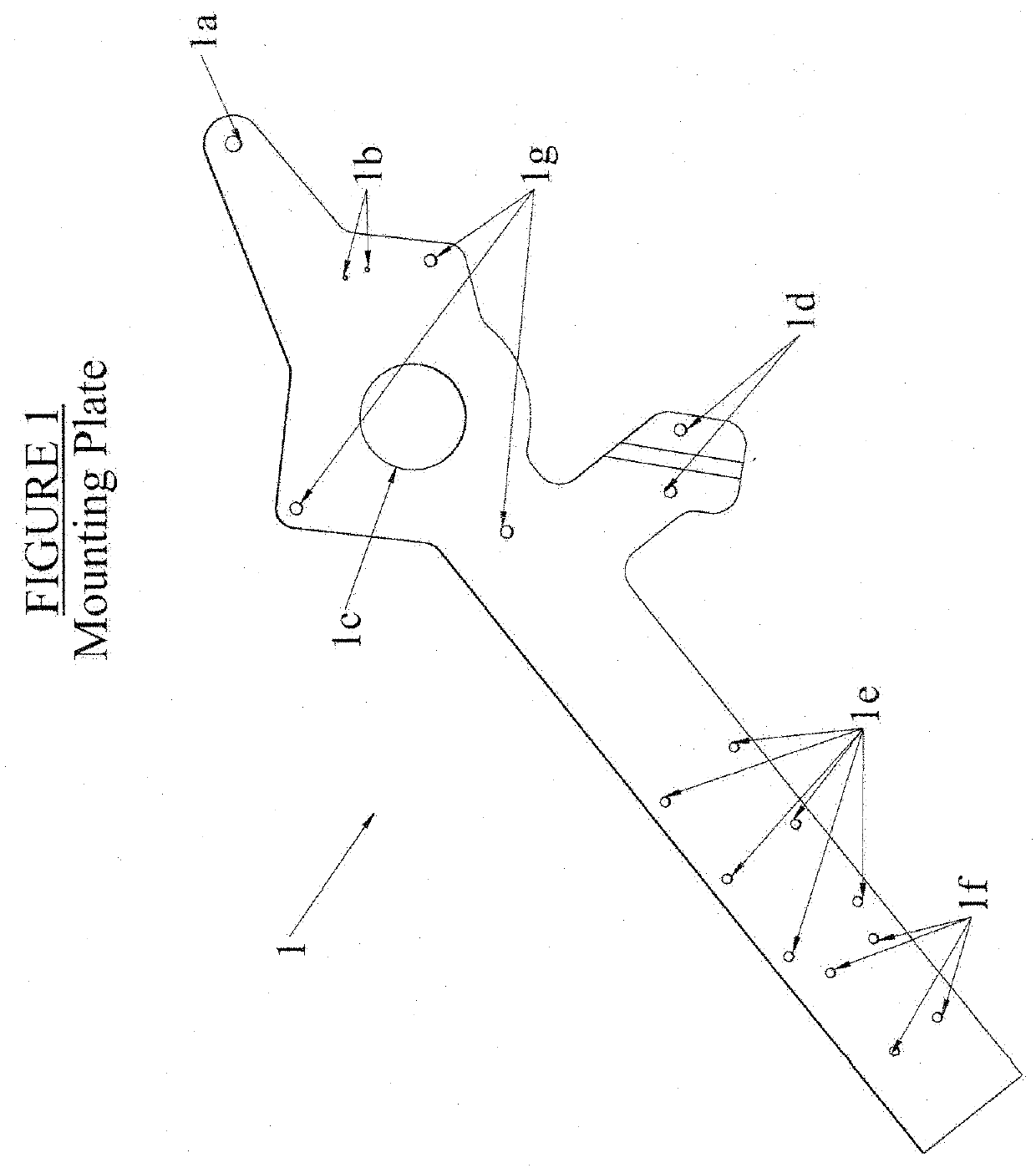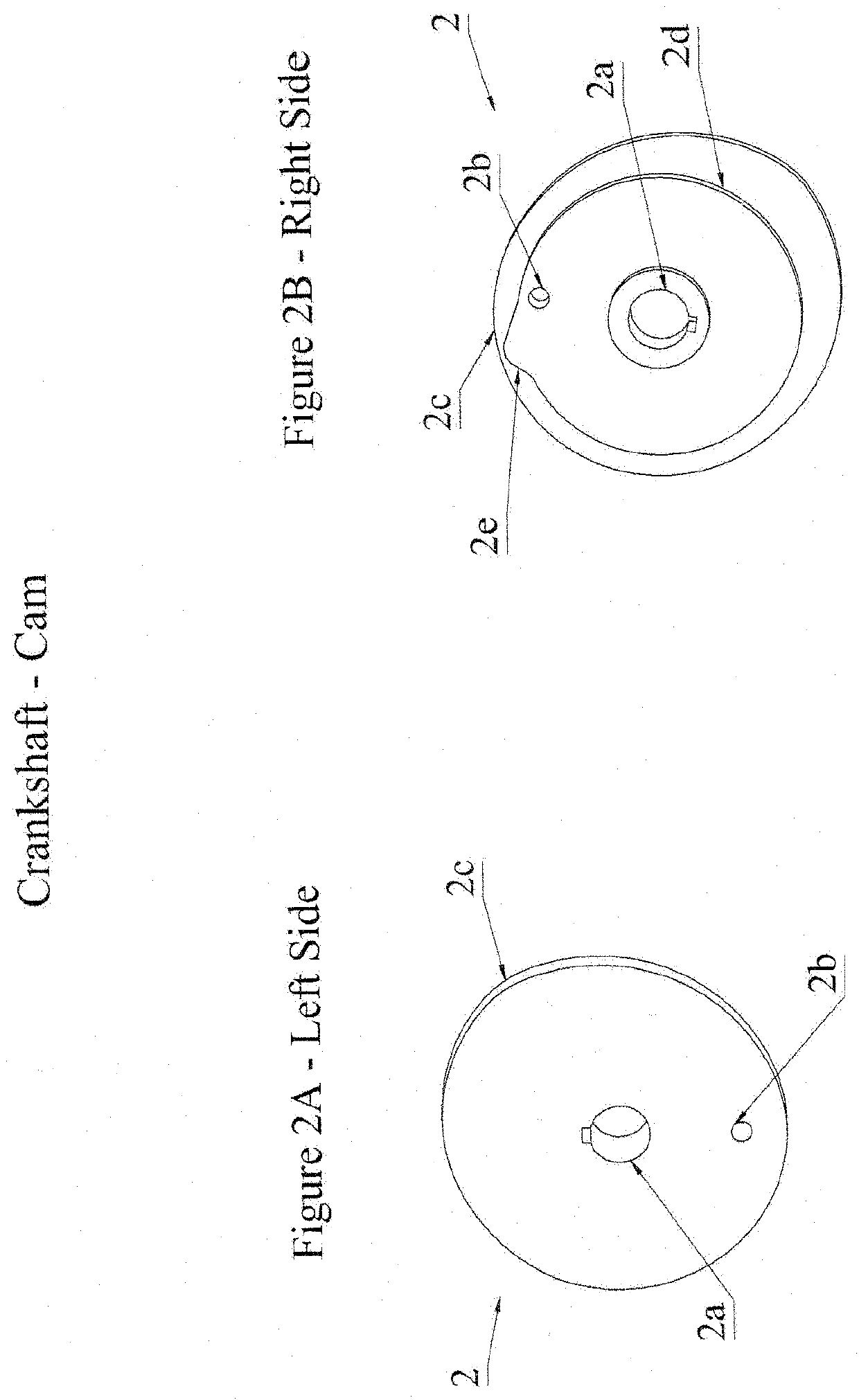Apparatus for producing charged incendiary spheres
a technology of incendiary spheres and apparatus, applied in the field of intentional burning, can solve the problems of significant operational challenges, obvious potential dangers to the personnel who operate, and add environmental risks and significant costs, and achieves low profile, high cycle speed, and convenient operation.
- Summary
- Abstract
- Description
- Claims
- Application Information
AI Technical Summary
Benefits of technology
Problems solved by technology
Method used
Image
Examples
Embodiment Construction
[0030]There are eight main mechanical parts, or assemblies, which combine to form the underlying mechanical design that gives the apparatus its particular functionality and capabilities. The first is mounting plate (1) which mounts and connects together, the other seven parts or assemblies. Towards the top of this mounting plate is positioned a “crankshaft-cam” (2) which is bolted through a bushing so it can rotate. This double-named part is called ‘crankshaft’ because it mounts a connecting rod (3) which converts rotational motion to linear reciprocating motion, and, called ‘cam’ because it has a cam surface on its outer circumference; in actuality there is not one but two individual cam surfaces on the outer circumference of the crankshaft-cam. One of these cam surfaces drives the reciprocating motion of mechanical pump assembly (4), and the second cam surface triggers an electrical on / off switch. The other end of the connecting rod is bolted to the upper end of reciprocating inje...
PUM
 Login to View More
Login to View More Abstract
Description
Claims
Application Information
 Login to View More
Login to View More - R&D
- Intellectual Property
- Life Sciences
- Materials
- Tech Scout
- Unparalleled Data Quality
- Higher Quality Content
- 60% Fewer Hallucinations
Browse by: Latest US Patents, China's latest patents, Technical Efficacy Thesaurus, Application Domain, Technology Topic, Popular Technical Reports.
© 2025 PatSnap. All rights reserved.Legal|Privacy policy|Modern Slavery Act Transparency Statement|Sitemap|About US| Contact US: help@patsnap.com



